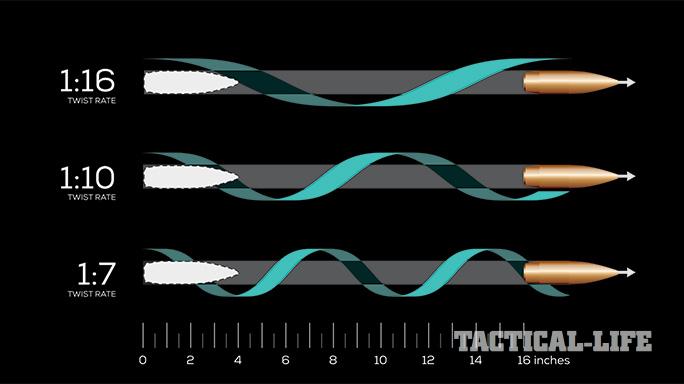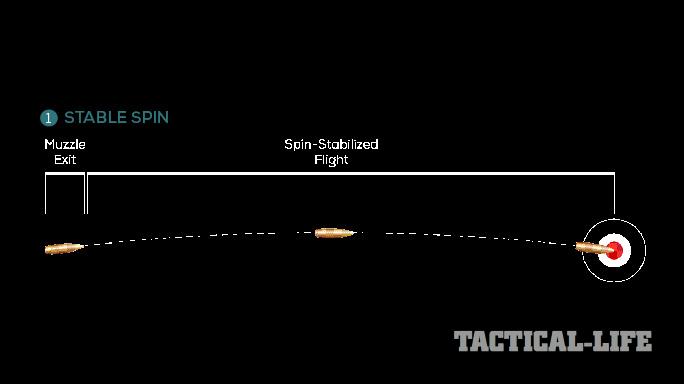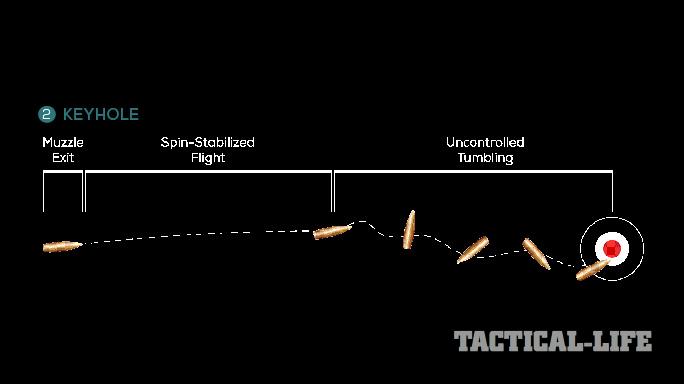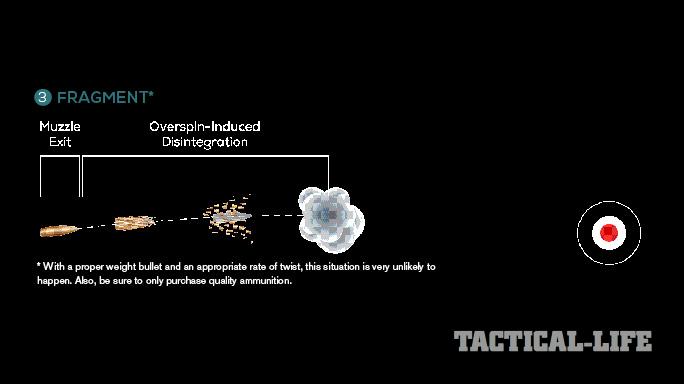One key characteristic that you’ll typically see associated with rifle and handgun barrels is their twist rate. But what exactly is twist rate (hint: it has nothing to do with dancing), what does it affect and how do you know what works best for you?
To understand this better, we need to cover some fundamentals first. When you discharge a firearm, the bullet is expelled down the barrel’s bore, exits the muzzle, then travels through the air towards its target. The more consistently that the barrel can deliver rounds on target in the same spot, the better. In the 15th century, rifling was invented to cause the projectile to spin and thus better stabilize during flight. Toss around a football, and you’ll understand the concept — once you’re able to channel your inner Tom Brady and achieve that perfect spiral, your passes will fly truer and farther. To achieve this with a firearm, spiral grooves are formed on the inside of the barrel (a process called rifling); as the bullet travels down the bore, these grooves cause it to rotate.
- RELATED: Infographic: Meet the Modern AR-15 Rifle and Its Components!
- RELATED: On Target: 20 Police Marksman Facts
The twist rate of the rifling in a particular barrel is generally expressed by how far down the barrel the rifling extends to make a single revolution. A popular twist rate for AR-15s is 1:7 inches, meaning that the rifling makes one complete turn in seven inches of travel down the barrel. The larger the second number in the ratio, the slower the twist — so a .45ACP bullet departing a 1911’s 1:16-inch twist barrel will be spinning at a slower rate than the AR-15 in our previous example. Of course, in the case of the 1911, the barrel isn’t 16 inches long, so the bullet will not have achieved a complete revolution before it exits the muzzle.
Advertisement — Continue Reading Below
The vast majority of handgun and rifle barrels feature a constant twist rate throughout the length of the barrel. However, it’s also possible to vary the twist rate — increasing or decreasing it from breech to muzzle. Decreasing the twist rate is counterproductive and destabilizes the projectile, but progressively increasing twist rates (called “gain twist rifling”) offers some theoretical benefits, such as longer service life and potentially increased accuracy and velocity. With this sort of rifling, the projectile is progressively spun up to the final twist rate. However, the higher production costs tend to outweigh the benefits in most applications, with gain twist rifling typically found only in high-end custom barrels — and, notably, the hand cannon otherwise known as the Smith & Wesson 460XVR revolver. Plus, current manufacturing processes and tolerances are quite impressive, already delivering excellent performance. You might conclude that gain twist rifling is more helpful with large projectiles, and you’d be right, as you’re more likely to find it in artillery pieces.
The length, diameter, shape and velocity of a given projectile determine the twist rate that best stabilizes it in flight. Shorter higher-caliber (read: larger-diameter) bullets tend to require slower twist rates, while longer, smaller-caliber bullets require higher twist rates. Our earlier examples highlight this, with the fat .45ACP barrel featuring a 1:16-inch twist rate and the 5.56 mm AR-15 barrel a faster 1:7-inch twist rate.
However, end users utilize a variety of different types of ammunition in their firearms, so usually it makes sense to optimize specifically not for a single projectile but rather for a range of different types of bullets. So what happens if the twist rate is too high or too low? When the projectile is not spun quickly enough, it may not be sufficiently stabilized in flight and begin to yaw and tumble, destroying its accuracy. This is often seen on the target as “keyholing,” where the bullet no longer leaves behind a nice round hole but instead perforates the paper at an angle. On the other hand, excessive twist rates can affect accuracy, accelerate wear and even rip jackets apart and cause projectiles to disintegrate.
Advertisement — Continue Reading Below
The popularity of the AR-15 platform and the wide variety of different .223 and 5.56mm loads for different applications provide a perfect example of the challenge of trying to accommodate all the different combinations. There’s everything from light .223 varmint rounds that are just fine with slower twist rates like 1:12-inch, to commercial 55-grain loads that are content with 1:9-inch, to badass military loads such as Mk262 with 77-grain SMK bullets that like 1:7-inch twist rates. Anyone who decides to build up their own upper will need to decide between an array of barrel choices.
So what’s the right twist rate for you? You may not always have a choice, but there’s no single right answer when you do — consider the range of ammunition you intend to use for your specific applications, and choose a barrel configuration to match.
How are rifled barrels made?
Advertisement — Continue Reading Below
Ever wonder how those rifling grooves can be made so precisely? Some common methods for producing rifled barrels include the following:
- Cut rifling: cutting grooves one by one in successive passes with a cutting tool
- Broach rifling: cutting grooves all at once in a single pass with a broach-cutting tool
- Button rifling: cold-forming process where a button with the rifling pattern is moved through the bore, engraving grooves as it goes
- Hammer forging: forging the barrel by hammering it around a mandrel that has a reverse image of the rifling pattern
What’s the twist rate of your barrel?
Did you get a hand-me-down from your grandfather, and you’re not sure of the barrel specs? Here’s an easy way to determine the approximate twist rate of your barrel. Grab a cleaning rod, jag and patch. The rod should spin freely in its handle, and the jag and patch should fit snugly in your barrel. Place the patch on the jag and insert it into the barrel — preferably from the breech end to avoid damaging the barrel’s crown. Wrap a piece of tape around the rod near the handle and mark it in one spot. Measure the distance from the handle to the barrel. Grasp the handle and carefully push the rod farther down the barrel. Keep an eye on the mark and stop when it makes one full revolution. Take another measurement, subtract it from the first, and that will be the denominator of your twist rate.
Advertisement — Continue Reading Below

























